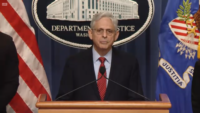"There are false perceptions that shelters [built to federal standards] are too expensive to build, are all built underground and can only be used during a storm," says Michael Sapp, president of Sapp Associates, Springfield, Mo., which designs shelters. "But a shelter can be a performing arts center, a classroom building, a gymnasium—built to federal shelter standards," he adds.
Kiesling adds, "Schools lead the show for building community shelters," partly because of recent media attention to tornado-destroyed schools in Moore and nearby Joplin, Mo., in 2013 and 2011, respectively.
Moore and Joplin storms led to a demand for community safe rooms and a scramble for federal disaster funds to help pay for them, says Brian Orr, a structural engineer at Toth Associates, Springfield, Mo., whose company also helps clients navigate applications for the Federal Emergency Management Agency (FEMA) Hazard Mitigation Grant Program (HMGP).
"We've helped fund construction of 25,000 residential and 2,500 community safe rooms; almost a billion dollars of safe rooms," says Edward M. Laatsch chief of FEMA's building risk reduction branch.
All community safe rooms funded under HMGP must meet FEMA 361 community shelter design guidelines and comply with ICC 500. Both HMGP and ICC 500 describe structures that must provide "near-absolute protection" during a tornado. Among other requirements, this includes roof systems that can withstand a 100-psf rubble load and doors and windows—tested using a 15-lb 2x4 traveling 100 mph—that resist windborne debris.
Webb City, Mo., which borders Joplin County to the north, had no safe rooms when the tornado hit Joplin's high school. "After the tornado, we applied for every grant we could," says Anthony Rosetti, superintendent of the Webb City school district. Some parents refused to bring their children to school after the storm. "It's a humbling experience for people to say our school isn't a safe place for their kids," he says.
Soon after, seven Webb City schools received HMGP grants, covering 75% of the basic construction costs to build community safe rooms. One of these is a 180-ft-dia, 58-ft tall domed gymnasium that Rosetti says will be one of the largest FEMA-rated community safe rooms in Missouri. The state will consider funding any size community-shelter building up to 5 sq ft per local resident.
Oklahoma has a FEMA cost-share program that matches 50% of the installation cost for residential safe rooms in disaster zones. So far, the state helped fund 12,000 safe rooms. FEMA defines a residential safe room in a house or small business as one that can provide near-absolute protection. Typically 8-ft or 14-ft squares, shelters are most often made from reinforced concrete or structural steel.










Post a comment to this article
Report Abusive Comment